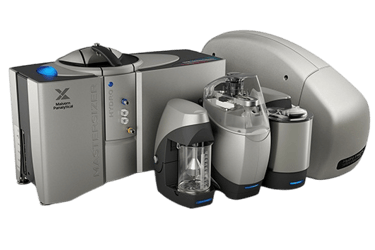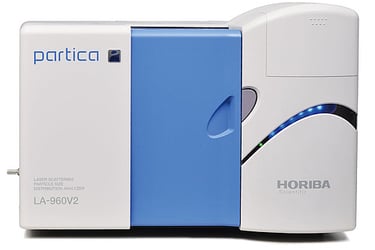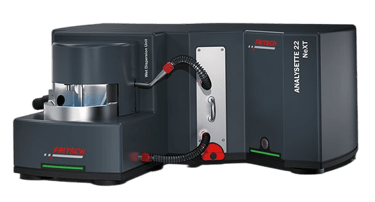Laser diffraction is a widely used technique for measuring the size and distribution of particles in a sample. It is based on the principle that particles scatter light in a predictable manner depending on their size. By analyzing the scattering pattern, the particle size distribution can be determined.
LASER DIFFRACTION
Laser diffraction is a scientific method used to measure the size of particles in a sample and understand how these particles are distributed (e.g., are there more small particles or large particles?). It works by shining a laser beam through the sample and analyzing how the light scatters when it hits the particles.
Working Principle of Laser Diffraction
When light (from a laser) hits a particle, it scatters in different directions. The way the light scatters depends on the size of the particle:
Large particles scatter light at small angles.
Small particles scatter light at large angles.
By measuring the angles and intensity of the scattered light, we can calculate the size of the particles.
The scattering of light is explained by two theories:
Fraunhofer Diffraction: Used for larger particles (>10 µm). It assumes that particles act like obstacles, bending light around them.
Mie Theory: Used for particles of all sizes, including very small ones (<10 µm). It considers the interaction of light with the particle's material and the surrounding medium.


/
/
Laser Diffraction Details
Related Articles
Manufacturers and solutions
Malvern Panalytical Model- Mastersizer 3000
ANTON PAAR Model- LITESIZER DIF 500
HORIBA Model- Partica LA-960








FRITSCH Model- ANALYSETTE 22
BETTERSIZE Model- Bettersizer S3 Plus
SYMPATEC Model- HELOS
MICROTRAC Model- VISCOQC



















Innovation House
Mon-Sat 9am-7pm

contact@nextagen.in

+91 2654059388
© 2024 Nextagen Analytics Private Limited . All Rights Reserved.
